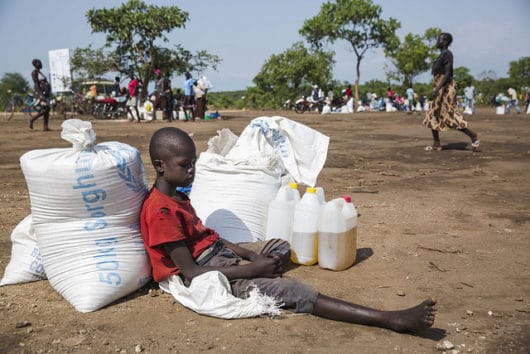South Sudan Refugee Crisis

Difficulties for Return
Although some conflict has subsided in parts of South Sudan since the promise of peace in September, some aid organizations are deeming it unsafe for refugees to return to their homeland. These organizations also believe it is highly unsafe for women and children to return to South Sudan. Around 65 percent of women and girls in the country have reported being sexually assaulted. This, in addition to the high rate of children who have experienced some sort of violence or trauma, creates a hostile environment for vulnerable refugees.
The other factor is that those internally displaced, who are the most likely to return home, have not been adequately informed about their return options or that a safe journey has not been completely planned for them. There is also not sufficient planning for the long term in potential returns areas to provide ongoing aid. There is significant aid manipulation within the country as some armed groups have been known to redirect aid meant for civilians and use it for their own purposes. The government has even restricted aid from certain communities by insisting on that area’s instability.
UNHCR Help
However, the UNCHR has offered an aid solution, rather than having these refugees return to an unstable environment. The organization has recently appealed for $2.7 billion to aid refugees in their host countries and the internally displaced people. Many of the refugees in host countries are living in crowded and unsustainable conditions. In some areas they are only able to access five liters of water per person a day, many schools are without teachers and health clinics are without either doctors or medication. This strain of resources has caused tensions between the refugee and host communities.
The money proposed by the UNCHR plans to help make the communities shared by host nations and refugees sustainable by providing adequate resources for the mass influx of people. The organization believes that social cohesion between the two groups is the key to allowing them to survive and eventually thrive.
Work of the Red Cross
The International Committee of the Red Cross (ICRC) has also been providing great aid to South Sudan refugees. The organization has been focusing on helping food insecure communities in South Sudan and its host countries by providing emergency relief and sanitation facilities. They have also provided these communities with the means to provide for themselves by equipping them with seeds, farming tools, and fishing nets.
As the UNCHR, ICRC, and other organizations work to help South Sudan refugees and displaced communities become stable and fit for survival, they provide these people with the hope of a safe and meaningful return home. These refugees desperately need aid so that they can survive in their new communities and come back to their home country.
– Olivia Halliburton
Photo: Flickr
